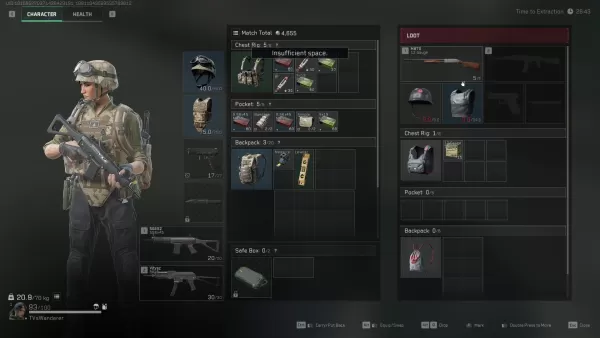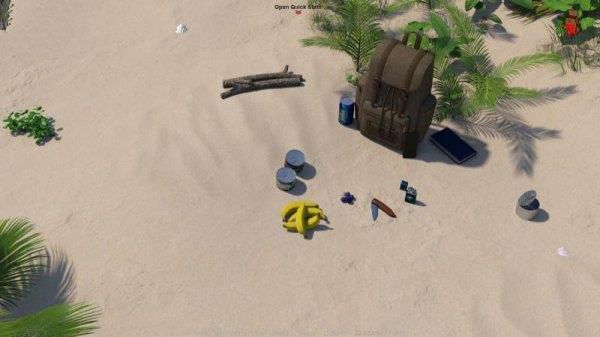Operations mode in Delta Force, also known as Hazard Operations or Extraction mode, is the pulsating core of the game's high-stakes action. Whether you're familiar with it as Operations or simply "raiding," the objective remains consistent: drop into the map, gather valuable gear, and extract safely before being eliminated by other players or AI enemies. What sets this mode apart is the high risk involved—everything you bring in could be lost if you fail to make it out.
This comprehensive guide aims to do more than just help you survive; it will walk you through the entire process of Operations mode, from start to finish. Learn how to effectively pace your run, manage your gear, and make strategic decisions that will increase your gains over time. If you're solely interested in survival strategies, our dedicated blog post on the topic is the perfect resource for you.
Whether you're embarking on this adventure solo or with a squad, understanding the mechanics is crucial to playing strategically and efficiently.
What Operations Mode Actually Is
Delta Force's Operations mode is a dynamic PvPvE sandbox where each match offers a unique experience. You, along with up to two other players, enter a live map teeming with AI soldiers, various loot spawns, and competing teams. Your mission is to amass as much loot as possible and safely extract before you're taken down.
Unlike traditional shooter modes, there's no score to chase in Operations mode. The items you successfully extract contribute to your inventory outside the raid. Conversely, should you die, you lose everything you're carrying, except for the essentials you've secured in your Safe Box. This risk-and-reward dynamic is what fuels the intensity of Operations mode, whether you're simply scavenging for medical supplies or engaging in a stealthy retreat.
Loadout Planning and Inventory Control
Success in Operations mode begins before you even set foot on the map—it starts with crafting the perfect loadout for your mission. Each match requires an entry fee, so your loadout choices are critical. Essentials like a helmet, armor, chest rig, and backpack are mandatory for deployment. However, the additional items you decide to bring will shape your approach to the game.

While extraction zones are typically fixed, some maps feature dynamic elements such as elevators or enemy-controlled checkpoints. It's wise to plan your exit strategy before you dive deep into looting.
Loot Smarter, Not Harder
In Operations mode, every item has a sell value, but not all are worth the risk. Initially, prioritize collecting healing items, attachments, and rare electronics—these are compact, valuable, and can be safely stored in your Safe Box if necessary.
Heavy weapons and armor may be tempting, but they can slow you down and occupy valuable space. Only carry such items if you're certain of extracting or if you're close to your exit and have nothing to lose.
A useful tip for newcomers is to steer clear of major loot areas in the early stages of the match. Allow other teams to battle it out, then swoop in to collect the spoils. If you're playing solo, focus on looting around the map's periphery and circle back later. You'll often find valuable items left behind after intense team skirmishes.
Picking the Right Operative
Your choice of Operative in Operations mode dictates your playstyle. Not all Operators are suited for stealth or loot-centric gameplay, so select one that aligns with your objectives.
Luna and Hackclaw excel in gathering intelligence and maintaining mobility. Luna's ability to tag enemies and disrupt advances with her shock arrows is invaluable, while Hackclaw's silent movement and knife takedowns are perfect for stealthy operations. Stinger's healing capabilities make him an excellent choice for team runs, especially when supporting more aggressive players.
Avoid Operatives with conspicuous or flashy abilities unless your strategy involves direct confrontation. Characters like D-Wolf are entertaining but can draw unwanted attention in a mode where staying hidden often yields better results.
Fight When It Matters
In Operations mode, choosing your battles wisely is more crucial than emerging victorious from every skirmish. Engaging in PvP can yield gear and XP, but it also slows you down and attracts attention. Only fight when you're fully prepared or when it's your only viable option.
If you find yourself in a firefight, keep moving and aim to end it swiftly. Utilize your Operative's abilities to gain an edge—Luna's detection arrow can reveal hidden foes, and Stinger's smokes can provide cover for healing or escape.
Remember, you can always loot fallen players later. If two teams are clashing, consider hanging back and letting them wear each other down. Engaging in third-party fights is risky, but it's a highly effective way to acquire gear without directly challenging every opponent.
Making the Most of Each Match
Every raid in Operations mode is an opportunity to build value, hone your skills, or learn something new. Don't dwell on a poor run; instead, use it to refine your strategy for the next match.
Conserve your credits during losing streaks and play more strategically when you're on a roll. Upgrade your Safe Box as soon as possible, experiment with different Operative configurations, and familiarize yourself with the maps to discover optimal looting routes.
With time, you'll shift your focus from mere survival to optimizing your gameplay. That's when Operations mode truly becomes enjoyable.
Delta Force's Operations mode is far more than just a simple loot-and-run scenario. It's a game of calculated risks, meticulous planning, and astute decision-making. Assemble your loadout with intention, loot with precision, and know when to engage or retreat. Remember, every setback is merely a stepping stone that will make your eventual triumphs all the sweeter.
For the best gaming experience, consider playing Delta Force on PC with BlueStacks. You'll benefit from quicker load times, precise controls, and easier gear management. It's the ideal way to stay competitive as you master the intricacies of Operations mode.








